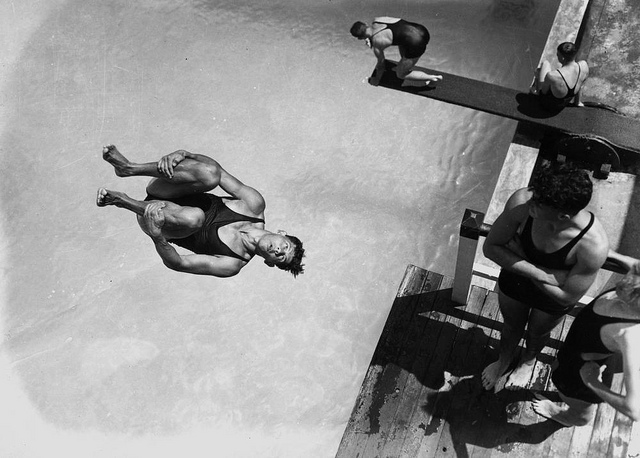5. Finding public domain works
What is the public domain?
A public domain work “is not protected by copyright, either because copyright has expired or because of a failure to comply with formal requirements for copyright protection” (Encyclopaedic Australian Legal Dictionary). Once a work enters the public domain you can use, share, modify, or transform the creative work for free.
In Australia, published works generally enter the public domain 70 years after the death of the creator, but this may vary for particular types of work.
![]() Read the Australian Copyright Council’s fact sheet on the duration of copyright for more information on when particular types of work enter the public domain.
Read the Australian Copyright Council’s fact sheet on the duration of copyright for more information on when particular types of work enter the public domain.
How can you tell when a work is in the public domain?
Sometimes a work will be labelled to say it is in the public domain. You may see a crossed-out copyright symbol, or text stating “this image has no known copyright restrictions“. This is not always the case, however, and sometimes you will need to work out the public domain status using the date of publication.
![]()
Images
In Australia, photographs taken prior to 1 January 1955 are considered to be in the public domain. Photographs taken after 1 January 1955 are protected for the life of the creator, plus an additional 70 years.

John Oxley Library, State Library of Queensland Neg: 204200.
Flickr is a great resource for public domain photographs. Simply search by keyword and filter your results by changing the “Any licence” drop-down to “No known copyright restrictions”. Alternatively, browse the Flickr Commons.
Many libraries have extensive collections of historical images.
Australian collections
- National Library of Australia
- State Library of New South Wales
- State Library of Queensland
- Trove Pictures
- UQ Fryer Library
International collections
- British Library on Flickr
- Europeana
- Library of Congress Free to Use and Reuse Set
- New York Public Library Public Domain Collections
Audio
Determining when audio enters the public domain can be difficult. In Australia, sound recordings made prior to 1 January 1955 are in the public domain. However, because audio may be just one part of other types of works, we recommend that you contact the Library for copyright advice if the work does not include any indication of copyright status.
These are some examples of public domain audio resources:
- Choral Public Domain Library
- Internet archive — Audio (some recordings are public domain)
- Mutopia — Public domain or Creative Commons licenced music.
Video
As with audio, determining whether video content has entered the public domain can be complicated. We recommend that you contact the Library for copyright advice if the work does not include any indication of copyright status.
There are many collections containing public domain video content:

